Love maps and want to save California’s wild spaces? This site is for you
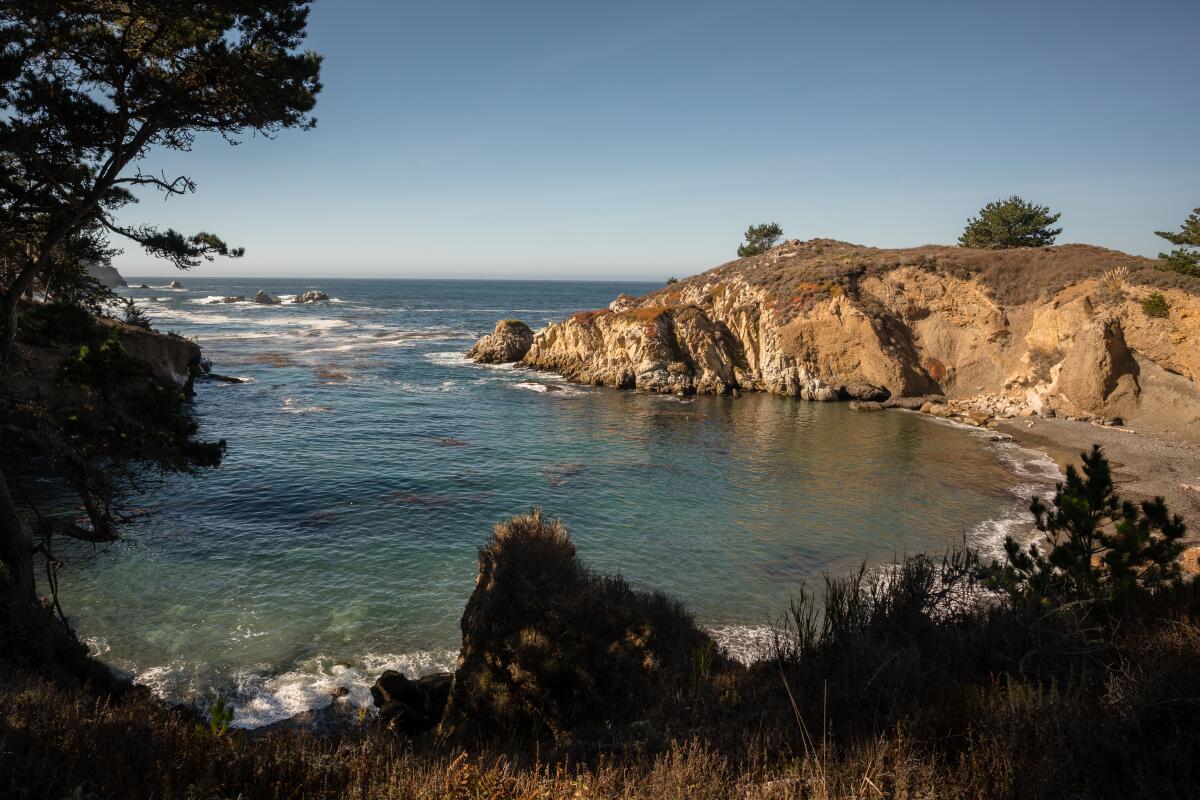
- Share via
This is the April 14, 2022, edition of Boiling Point, a weekly newsletter about climate change and the environment in California and the American West. Sign up here to get it in your inbox.
Confession time: I love maps. I’m one of those people who occasionally falls down a Google Maps rabbit hole, following the path of a river to its headwaters, or exploring far-flung islands in the Pacific Ocean, or tracing the boundaries of a national park.
So with California making plans to protect 30% of its lands and coastal waters by 2030 — a final strategy report from the state’s Natural Resources Agency is due out next week — I was intrigued to learn of a new mapping tool to support that “30 by 30” goal.
The CA Nature website allows Californians to pore over the landscape and consider which areas they might want to see protected in the future. The site’s “conserved areas explorer” shows the 24.1 million acres — just under 24% of the state’s land area — that are already conserved, many of them as parks, forests and preserves. Other interactive maps show which lands and waters offer the greatest biodiversity, and how rising temperatures and changing rainfall patterns are expected to alter the state’s landscapes.
The Redlands-based geographic information systems company Esri built the website for state officials. I’ve found some of the maps difficult to navigate — the biodiversity and climate impact pages in particular — and several features are still being added before Earth Day next week, including an “access” tool to illustrate opportunities for more equitable access to green space.
But assuming the site gets smoothed out a bit, CA Nature is a nifty way to bring to life a conservation initiative that’s been embraced by scientists, nature advocates and governments around the world, as I wrote in this newsletter two years ago.
“We have never yet had a statewide, bird’s-eye view of all the different places across the state that are already conserved,” said Jennifer Norris, a deputy secretary at the California Natural Resources Agency. “That allows you to visualize: OK, if I protect a new piece of land, how is that related to the existing protected areas? ... Is there a lot of biodiversity in this place? Could this be giving access to nature to a community that currently doesn’t have it? What’s it going to look like under future climate projections?”
“I’m also a map nerd,” she added, “and this is the kind of thing that map nerds dream about.”
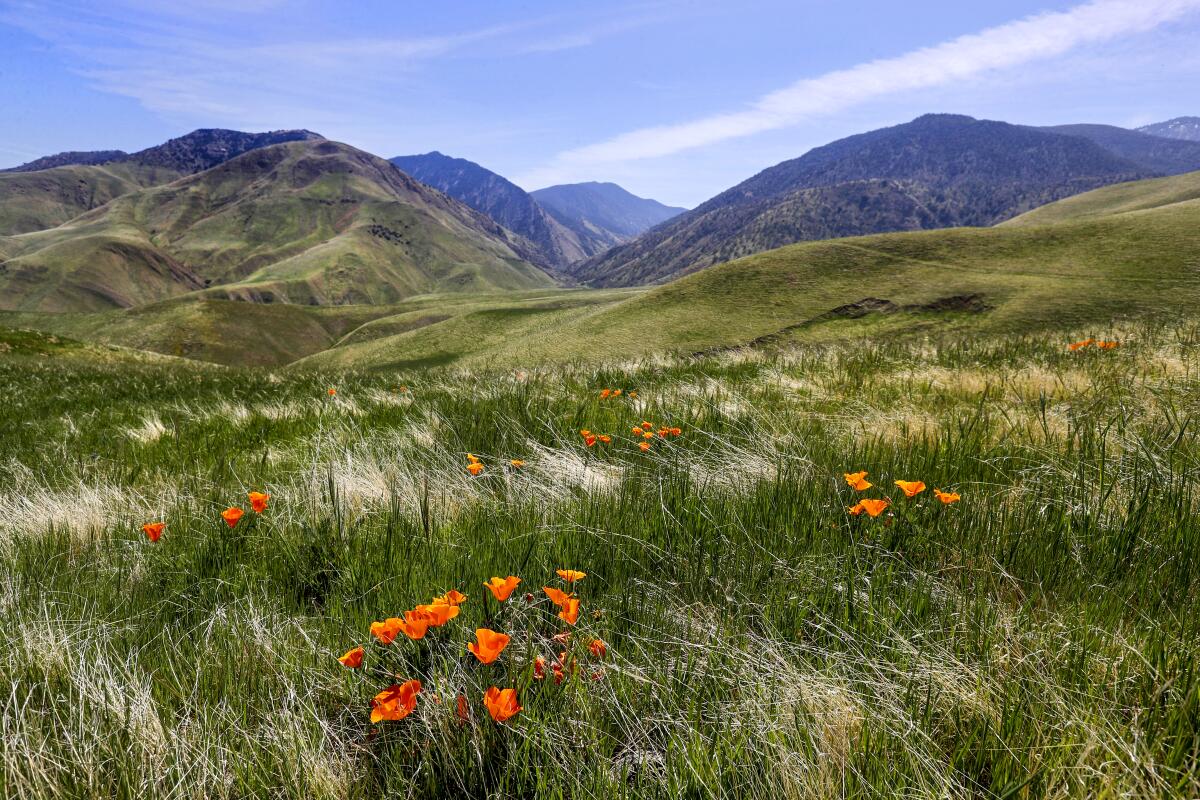
President Biden, too, has made 30 by 30 a priority through his America the Beautiful initiative. The Interior Department said this week it would distribute $375 million in ecosystem restoration funds to support 30 by 30, with other agencies chipping in $65 million and the White House targeting $1 billion in overall funding through private partnerships, HuffPost’s Chris D’Angelo writes.
But California is ahead of the game. While federal officials are still working on a roadmap for how to achieve the conservation goal, Gov. Gavin Newsom’s administration released its own draft strategy document in December, following a series of tribal meetings and workshops collectively attended by thousands of people. Environmental activists are mostly pleased by what they’ve seen.
“California sets the bar for conservation efforts. What we hope is that the federal effort will follow, and match, the level of ambition and inclusiveness,” said Helen O’Shea, a senior policy analyst at the Natural Resources Defense Council.
The December report spells out nine possible pathways for protecting more of California. The pathways include government agencies acquiring lands directly; conserving private lands through voluntary “easements”; strengthening protections for wildlife and ecosystems on lands that are already publicly owned; and restoring areas that have been degraded by human activity.
None of that will be easy. While nearly a quarter of California’s land area and 16% of its ocean waters are already protected, that leaves 6 million acres of land and half a million acres of water that will need to be shielded from development over the next eight years, in a state with a desperate need for new housing and land-use planning decisions dominated by local governments.
For an example of the tension between conservation and development, look to the Mojave Desert, where local elected officials have fought efforts to protect western Joshua trees from the ravages of global warming. Solar energy developers have also argued against designating the species as threatened, even though scientists say rising temperatures pose a serious long-term threat.
The battle came to a head this week when state biologists recommended against protections for the western Joshua tree.
“When the Titanic hit the iceberg, the ship’s captain didn’t wait until nearly everyone on board had drowned to issue an SOS,” Brendan Cummings, conservation director of the nonprofit Center for Biological Diversity, told my colleague Louis Sahagún. “But that is essentially what state biologists are asking us to do with western Joshua trees in distress.”
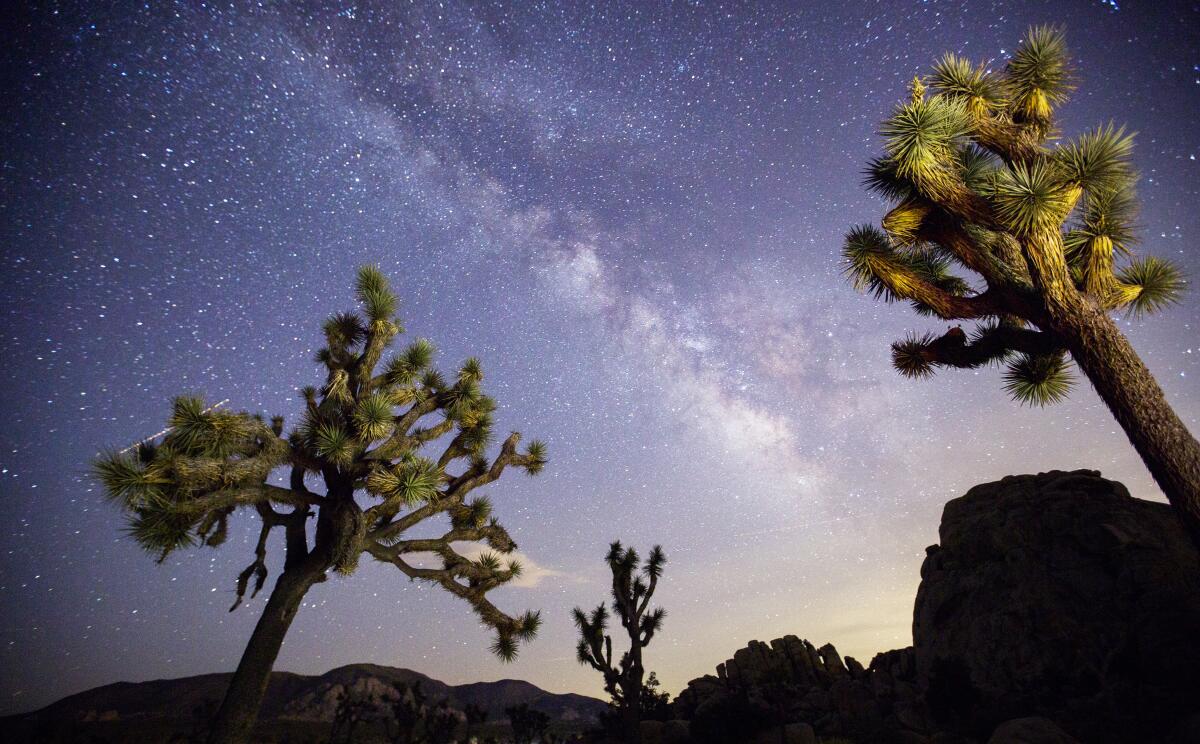
That fight helps illustrate why the California Natural Resources Agency is emphasizing a bottom-up approach to 30 by 30 that involves listening to local governments and letting individual communities determine which natural spaces are worth protecting.
Still, the Newsom administration will hold itself accountable for making sure the 30% target is actually achieved by 2030, Natural Resources Secretary Wade Crowfoot told me. He said state officials would provide funding and technical assistance to local groups working on conservation plans, and support the writing of regional conservation plans known as “NCCPs” that balance the need for new housing, clean energy infrastructure and other development with the protection of animals, plants and habitat.
“We’re working to cut green tape, reduce the number of hoops one has to jump through to get conservation done,” Crowfoot said.
The 30 by 30 campaign isn’t just about maintaining nature for wildlife, although that’s part of it. Conserved areas such as wetlands, grasslands and forests are vital for sucking carbon out of the atmosphere, limiting the climate damage from burning fossil fuels. They can also protect vulnerable communities from climate change consequences. Healthy coastlines, for instance, offer a buffer against rising seas and worsening floods. Urban parks can provide shaded refuge from ever-hotter heat waves.
Spending time outdoors can also improve your mental and physical health, with an article on the American Psychological Assn. website noting that exposure to nature “has been linked to a host of benefits, including improved attention, lower stress, better mood, reduced risk of psychiatric disorders and even upticks in empathy and cooperation.” But across the U.S., low-income people of color tend to have fewer parks in their neighborhoods, if any. Conservationists see an opportunity to fix that through 30 by 30.
O’Shea pointed toward Inglewood Oil Field as an example. Culver City and Los Angeles County officials are trying to shut down drilling and add the oil field to the surrounding Kenneth Hahn State Recreation Area, a popular green space in an otherwise park-poor part of town. There are plenty of obstacles, but O’Shea sees it as a good case study of a locally driven conservation plan with multiple benefits. She said the urban oil field has “tremendous habitat value” even if it needs significant restoration work.
“People look at urban areas and say there’s no habitat, there’s no biodiversity. And that’s just not the case,” she said.
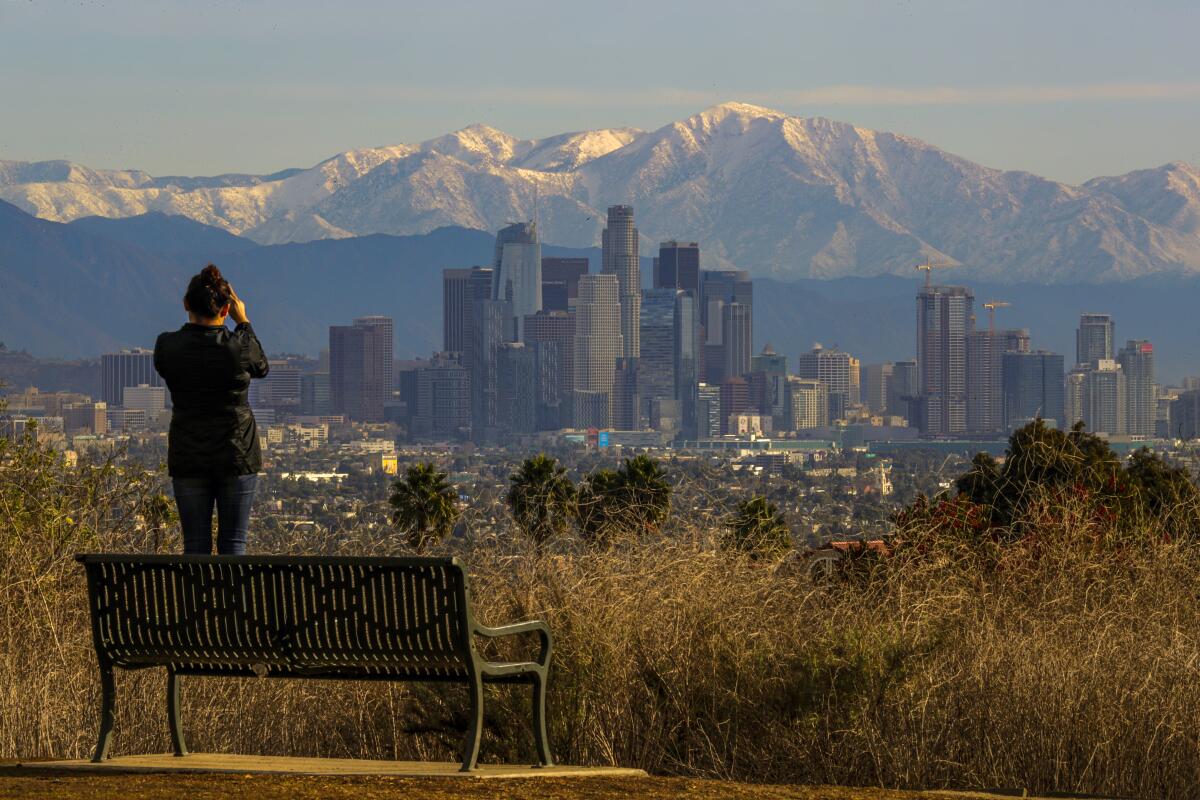
O’Shea told me she’s hoping for more specifics from the state on protecting freshwater ecosystems — i.e. rivers and streams — which are currently folded into the land-based 30% conservation target rather than given their own standalone plan. The state also needs to keep developing strategies to help Native American tribes reacquire and manage their ancestral lands, O’Shea said.
At the national level, meanwhile, environmentalists worry the Biden administration will count lands that are being farmed, grazed or logged as “conserved.” That’s less of an issue in California, which has adopted a strict definition of what counts as protected.
So there are reasons for optimism, conflicts to navigate and a lot of natural world still untrammeled. And 30% by 2030 may be just the beginning. The legendary biologist E.O. Wilson popularized the idea of permanently protecting 50% of planet Earth.
For any of that to happen, a lot of people will need to spend a lot of time looking at maps.
“If you don’t know where something is located, you can’t protect it,” said Ryan Perkl, green infrastructure lead at Esri, the company that developed the CA Nature website. “Once you have that map of those things, you can start to strategically target them.”
Here’s what else is happening around the West:
TOP STORIES
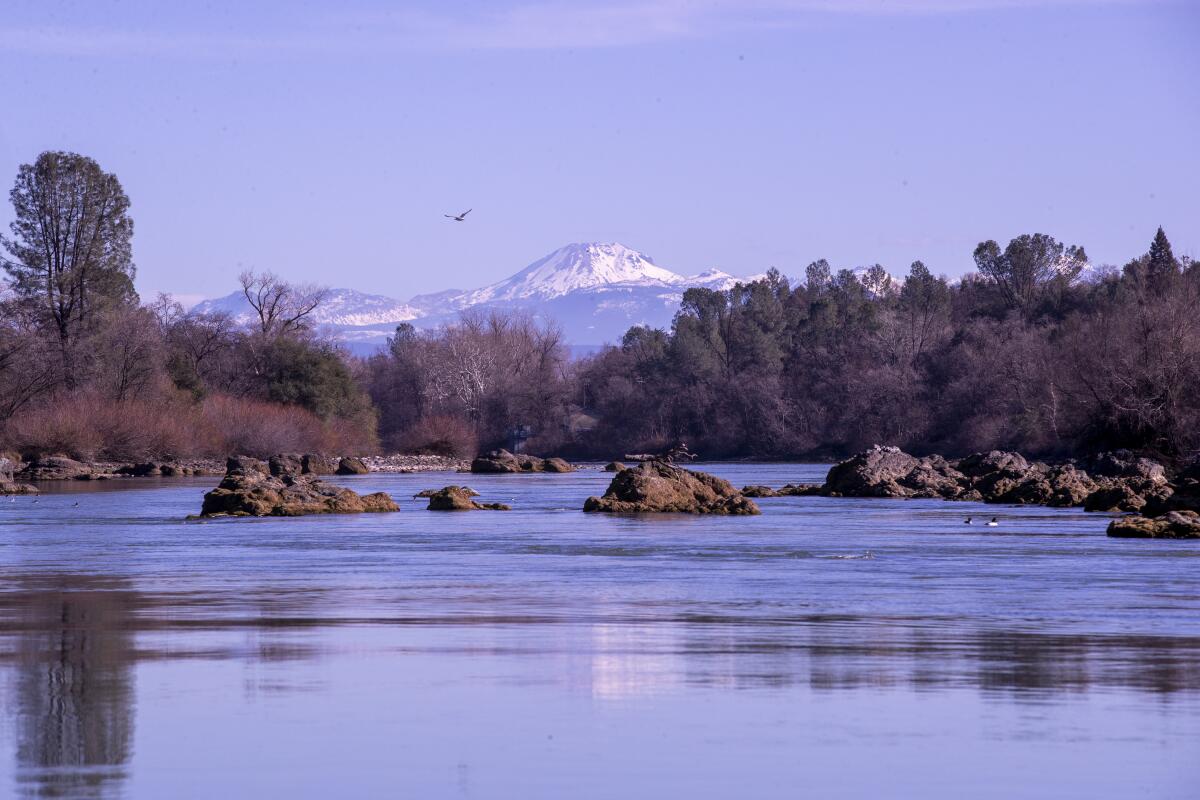
Government agencies plan to reintroduce endangered Chinook salmon in California’s McCloud River above Shasta Dam, which has blocked their passage for decades — a plan that has stirred opposition from the Winnemem Wintu Tribe. For more details, check out this beautifully illustrated story by my colleagues Ian James, Szu Yu Chen and Lorena Iñiguez Elebee, with photos by Allen J. Schaben and video by Claire Hannah Collins. Ian also wrote about a remarkable new report finding that California cities could reduce their water use as much as 48% by tearing out lawns, replacing old appliances and fixing leaky pipes.
Pacific Gas & Electric will pay $55 million to avoid criminal chargers over the Kincade and Dixie fires, which were ignited by PG&E equipment. The company also agreed to hire 160 to 200 employees in six Northern California counties to bolster fire safety work, according to this story by The Times’ Alex Wigglesworth. In other news, George Avalos reports for the Mercury News that PG&E Chief Executive Patti Poppe made more than $50 million last year. I should note that’s Poppe’s utility company isn’t the only one being sued over power lines sparking wildfires; in Oregon, Warren Buffett-owned PacifiCorp faces more than $1 billion in potential liabilities, although the company has disputed it’s to blame for the fires, per Katherine Blunt at the Wall Street Journal.
In late 2019, Gov. Gavin Newsom launched a program to fast-track environmental reviews for wildfire prevention projects. More than two years later, not a single project has been completed through the program, Capital Public Radio’s Scott Rodd reports. With the world getting hotter, these kinds of projects are only getting more urgent. Stop me if you’ve heard this one, but an L.A.-area heat wave broke records last week, with the coastal city of Long Beach hitting 101 degrees in early April, Gregory Yee reports.
THE ENERGY TRANSITION

Wind farm owners and customers — including the city of Los Angeles — are increasingly making plans to breed endangered California condors in captivity, to replace birds killed by wind turbines. Here’s the story from my colleague Louis Sahagún, who checked out the condor recovery program at the L.A. Zoo and also examined plans to reintroduce condors on Yurok tribal lands on California’s North Coast. Even farther north, a developer has proposed to build the West Coast’s largest offshore wind farm, a 2,000-megawatt project, off the coast of Washington state. Details here from David Iaconangelo at E&E News.
Replacing gas water heaters with electric heat pumps would not only reduce climate pollution — it could also provide a battery-like resource for storing clean electricity during the day and using it after sundown. How would that work? Canary Media’s Jeff St. John has the details. In a related story, Utility Dive’s Kavya Balaraman reports that California officials approved $40 million in incentives for the installation of heat pump water heaters, with low-income homes eligible for $4,885 and others eligible for $3,800. In yet another related story, Sempra Energy subsidiary San Diego Gas & Electric just released a climate roadmap in which it projects it will sell 65% less natural gas by 2045. Here’s the story from Rob Nikolewski at the San Diego Union-Tribune.
What role did Twitter bots play in the dramatic rise of Tesla stock? New research attempts to find out, and raises questions about whether financial regulators should require disclosures from companies that use bots for self-promotion, The Times’ Russ Mitchell reports. (It’s not clear that Tesla has anything to do with the bots promoting its stock.) In other clean vehicle news, the Los Angeles City Council voted to transition the city’s entire government vehicle fleet to electric cars, LAist’s Aaron Mendelson writes. The San Diego Union-Tribune’s Rob Nikolewski also wrote about the growing electric truck business, including garbage trucks.
AROUND THE WEST
The federal government may hold back nearly half a million acre-feet of Colorado River water from Lake Mead — an unprecedented move that would slash supplies for California, Arizona and Nevada. The Arizona Daily Star’s Tony Davis broke the story on the possible cutback, which would keep more water in Lake Powell upstream of Mead and ideally prevent Powell from falling so low it could no longer generate hydropower. There’s a similarly fraught water conflict on the Klamath River in Northern California and Oregon, where my colleague Ian James says farmers can expect just 15% of their full allocations this summer.
San Diego County’s cheapest path to 100% clean energy lies in buying power from lots of solar farms on agricultural land in the Imperial Valley to the east, according to a new report. But some Imperial Valley farmers aren’t happy about the idea of farmland getting converted to solar, which could create political challenges for San Diego, as MacKenzie Elmer writes for Voice of San Diego. These kinds of land-use battles aren’t unique to California; across the country, critics of large solar and wind facilities are campaigning to block them, often fueled by misinformation spread on social media, according to Reuters’ Nichola Groom.
A company wants to release millions of genetically engineered mosquitoes per week in California’s San Joaquin Valley, in an experiment approved by the federal government. Supporters say the plan would limit the spread of diseases such as yellow fever and dengue, because the modified bugs would mate with invasive mosquitoes that carry disease and produce offspring that will die, The Times’ Melody Petersen reports. Critics worry that releasing so many experimental bugs could backfire terribly.
POLITICAL CLIMATE
In a surprise move, Arizona utility regulators voted 4-1 to deny a massive gas-plant expansion that would have added air pollution in a Black community. The electric utility Salt River Project had argued the nearly $1-billion expansion was needed to maintain a reliable power grid, but nearby residents said it smacked of environmental racism, the Arizona Republic’s Ryan Randazzo reports. In another victory for climate justice advocates, federal officials paused oil and gas drilling on sacred land near Chaco Culture National Historical Park in New Mexico while they conduct a more detailed environmental review — but if they try to halt drilling permanently, an energy company might challenge them, Susan Montoya Bryan reports for the Associated Press.
Solar projects are being delayed — or seeing prices rise dramatically — as President Biden’s Commerce Department investigates whether Vietnam, Thailand and other countries are circumventing anti-dumping tariffs imposed on China. Here’s the story from the Colorado Sun’s Michael Booth and Margaret Fleming, who write that the solar industry is, unsurprisingly, not thrilled. In other federal climate news, the Biden administration says its use of the Defense Production Act to help finance U.S. production of lithium and other clean-energy metals won’t speed up environmental permitting for new mines — meaning it’s not clear how quickly the Defense Production Act will increase production, Jael Holzman and Hannah Northey write for E&E News.
Internal conflicts are roiling the Sierra Club, with big consequences for the future of the American climate movement. Members of the nation’s largest environmental group are currently voting for their board of directors, with a slate of insurgent candidates challenging what they say are the club’s efforts to minimize the role of grass-roots volunteers, who have historically played a major role in shaping the organization’s agenda, Jimmy Tobias reports for HuffPost. The election has also become a sort of referendum on the legacy of the club’s founder, John Muir, and whether the famed environmentalist was irredeemably racist.
ONE MORE THING

I haven’t had a chance to watch “Yellowstone,” the popular Kevin Costner TV drama about a Montana family operating a cattle ranch on the border of Yellowstone National Park. But I was intrigued to learn the show was mostly shot in Utah, not Montana — until its fourth season, when production moved to Montana because of more favorable tax incentives worth millions of dollars.
Now Utah lawmakers are giving Costner what he wants to return to the Beehive State for “Horizon,” an epic western that he plans to direct. They’ve raised a cap on film incentives to lure Costner back, Salt Lake Tribune columnist Robert Gehrke writes.
Have any of you watched “Yellowstone” or its prequel, “1883”? I’m curious what you thought. No spoilers, please.
We’ll be back in your inbox next week. If you enjoyed this newsletter, please consider forwarding it to your friends and colleagues.




